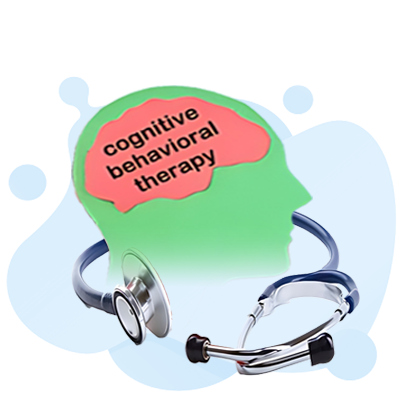Cognitive Behavioral Therapy Certification 2023

Cognitive Behavioral Therapy (CBT) has emerged as a highly effective therapeutic approach for addressing a wide range of mental health conditions. As the demand for CBT continues to grow, so does the need for qualified practitioners who possess the necessary skills and knowledge to provide high-quality care. This has led many professionals in the field to pursue certification in CBT to enhance their credibility and expertise.
Free Cognitive Behavioral Therapy Practice Test Online
Cognitive Behavioral Therapy Definition
Cognitive Behavioral Therapy (CBT) is a therapeutic approach that helps individuals identify and challenge the negative thought patterns and beliefs that contribute to their emotional distress. By examining the relationship between thoughts, feelings, and behaviors, CBT empowers individuals to develop healthier coping strategies and improve their overall well-being.
One unique aspect of CBT is its focus on creating change in the present moment. Unlike other forms of therapy that may place more emphasis on exploring past experiences or childhood traumas, CBT encourages clients to examine their current thinking patterns and how they influence their daily lives. By gaining a deeper understanding of these cognitive processes, individuals are able to make more conscious choices about how they respond to various situations.
Furthermore, CBT prioritizes practical skills-building. In addition to exploring thoughts and emotions, therapists often provide clients with specific techniques and exercises they can use outside of sessions. These tools include techniques such as journaling, relaxation exercises, or problem-solving strategies. This hands-on approach enables individuals to actively participate in their own healing process and apply what they learn in real-life situations.
Cognitive Behavioral Therapy Examples
One powerful example of cognitive behavioral therapy (CBT) in action is the use of thought records. This technique helps individuals identify and challenge negative thought patterns that contribute to their distress. By recording and analyzing their thoughts, CBT allows people to catch themselves in the act of engaging in unhelpful thinking and replace these thoughts with more realistic and positive ones. This process not only helps individuals gain a better understanding of their own cognitive processes but also empowers them to actively change their thinking patterns.
Another interesting example of CBT is behavior experiments or assignments. These involve deliberately testing out new behaviors or strategies as a means of challenging old beliefs or assumptions. For instance, suppose someone has a fear of public speaking due to a belief that they will embarrass themselves or be judged by others harshly. In this case, a CBT therapist might encourage the individual to participate in small speaking engagements while gradually increasing the level of difficulty. Through consistent exposure and feedback, this approach allows people to gather evidence that contradicts their negative beliefs and ultimately reduces anxiety.
CBT can also be applied effectively when addressing insomnia or sleep-related issues through techniques such as sleep hygiene education and stimulus control therapy. By identifying and modifying poor sleep habits, implementing relaxation techniques, and creating an optimal sleep environment, individuals can experience significant improvements in both the quality and duration of their sleep. This highlights how CBT offers practical solutions for specific challenges by targeting the underlying thought processes behind them.

Cognitive Behavioral Therapy Exercises
Cognitive Behavioral Therapy (CBT) exercises are powerful tools to help individuals transform their thoughts and behaviors. One effective exercise is the thought record, which encourages individuals to identify and challenge negative or irrational thoughts. By writing down these thoughts, individuals can gain insight into patterns and distortions in their thinking, making it easier to replace them with more positive and rational ones.
Another valuable CBT exercise is the behavioral experiment. This exercise involves actively testing out new behaviors or responses in real-life situations. By doing so, individuals gather evidence that challenges their negative beliefs or assumptions. For example, someone struggling with social anxiety may test the hypothesis that people find them boring by engaging in small talk at a social event. If they receive positive feedback, it provides concrete proof that their assumption was unfounded.
In conclusion, Cognitive Behavioral Therapy exercises provide practical tools for transforming mental health by challenging negative thoughts and testing new behaviors. Incorporating these exercises into daily life can lead to profound changes in how we think and act, ultimately allowing us to live happier and more fulfilling lives.
Cognitive Behavioral Therapy Books
Cognitive Behavioral Therapy (CBT) has become a popular therapeutic approach due to its effectiveness in treating common mental health issues such as anxiety and depression. While therapy sessions with a trained professional are highly recommended for those seeking CBT, books can also serve as valuable resources to deepen your understanding and practice of this transformative technique.

One must-read book is Feeling Good: The New Mood Therapy by David D. Burns. This classic guide explores the connection between our thoughts, emotions, and behavior, providing practical strategies to challenge negative thinking patterns and improve overall well-being. It offers readers an opportunity to develop skills in identifying cognitive distortions and replacing them with more realistic and positive thoughts.
Another great resource is Mind Over Mood: Change How You Feel by Changing the Way You Think by Dennis Greenberger and Christine A. Padesky. This workbook-style book offers step-by-step exercises that allow individuals to apply CBT techniques on their own or alongside therapy sessions. It provides tools for recognizing thought patterns, addressing automatic reactions, and developing healthier coping mechanisms.
Cognitive Behavioral Therapy Woorksheets
Cognitive Behavioral Therapy (CBT) worksheets provide valuable tools for individuals seeking to gain a deeper understanding of their thoughts, emotions, and behaviors. These worksheets serve as practical aids in CBT sessions, allowing clients to actively participate in their own healing process. By reviewing and engaging with the worksheets outside of therapy sessions, individuals can reinforce the skills and strategies they are learning.
One significant benefit of CBT worksheets is that they promote self-awareness. Through various exercises, individuals can identify automatic negative thoughts or distorted thinking patterns that contribute to their emotional distress. By writing down these thoughts and examining them objectively through a worksheet lens, clients begin to realize the cognitive distortions at play. This heightened awareness empowers them to challenge these irrational beliefs and replace them with more rational alternatives.
Furthermore, CBT worksheets facilitate personalized interventions by promoting goal-setting and problem-solving techniques. Clients are encouraged to set achievable goals in different areas of their lives and develop action plans that will help them attain those objectives efficiently. With the guidance of these worksheets, individuals can break down larger goals into manageable tasks while identifying potential obstacles along the way. This approach enables clients not only to address present challenges but also equips them with long-term coping mechanisms they can utilize even after therapy has ended.

Cognitive Behavioral Therapy Techniques
One powerful technique used in cognitive behavioral therapy (CBT) is called cognitive restructuring. This involves identifying and challenging negative thought patterns that contribute to anxiety or depression. By examining the evidence for and against these thoughts, individuals can begin to reshape their beliefs and develop a more balanced perspective. For example, someone with social anxiety might have the automatic thought that everyone at a party is judging them negatively. Through cognitive restructuring, they may realize that this belief is based on assumptions, not facts, and start to reframe their thinking by considering alternative explanations.
Another effective CBT technique is exposure therapy, which involves gradually facing feared situations or stimuli in order to reduce anxiety or fear responses. This can be particularly helpful for individuals with specific phobias or post-traumatic stress disorder. The exposure process allows individuals to confront their fears in a safe environment with the guidance of a therapist. Over time, they learn that their anxious predictions are often unfounded and become desensitized to the feared stimulus. With repeated exposure and practice, individuals can regain control over their thoughts and reactions.
Overall, these techniques highlight how CBT focuses on understanding how our thoughts impact our emotions and behaviors. By utilizing cognitive restructuring and exposure therapy, individuals can develop healthier thought patterns and overcome debilitating anxieties. These techniques empower people to challenge negative beliefs, confront their fears head-on, and ultimately change the way they perceive themselves and the world around them.
Cognitive Behavioral Therapy Center
Cognitive Behavioral Therapy (CBT) has revolutionized the field of mental health treatment, offering a highly effective approach that combines the best of cognitive and behavioral therapy techniques. At a CBT center, individuals can find solace knowing they are in the safe hands of skilled therapists who are trained to help them overcome their challenges. The beauty of CBT lies in its focus on identifying and changing unhealthy patterns of thinking and behavior, ultimately leading to long-term positive outcomes.

One aspect that sets a CBT center apart from other therapy options is its emphasis on evidence-based practice. Unlike some alternative therapies that may lack scientific backing, CBT has been extensively researched and validated as an effective treatment for various mental health conditions. This means that clients can trust the therapeutic process at a CBT center, as it is grounded in empirical evidence and tailored to individual needs.
Moreover, at a CBT center, therapists work collaboratively with clients to address their specific goals and concerns. This client-centered approach fosters a sense of empowerment and ownership over one’s own mental health journey – an important factor in achieving sustainable change. Through personalized treatment plans, clients are guided to unearth deep-seated beliefs or thought patterns that contribute to their difficulties. By gaining awareness of these underlying factors and learning practical strategies for managing them, individuals can develop resilience and skillfully navigate life’s challenges.
Cognitive Behavioral Therapy App
Cognitive Behavioral Therapy (CBT) has proven to be a highly effective form of therapy for individuals struggling with mental health issues such as anxiety and depression. The integration of technology into therapy practices has given rise to an array of mental health apps, among which are CBT apps. These apps offer users the convenience and accessibility they need to engage in therapeutic practices whenever, and wherever they want.
One notable feature of CBT apps is their ability to track and analyze user data. By monitoring patterns of thoughts, behaviors, and emotions over time, these apps can provide valuable insights into one’s mental well-being. For instance, users can gain a better understanding of their triggers for anxiety or depression through daily self-reports on the app. Armed with this knowledge, individuals can then develop personalized strategies to manage their symptoms effectively.
With its emphasis on active engagement and practical techniques, CBT lends itself well to the digital space. CBT apps often include interactive exercises that encourage users to challenge negative thought patterns or practice relaxation techniques. Moreover, many apps nowadays incorporate gamification elements that make therapy sessions more engaging and enjoyable for users. This innovative approach not only keeps individuals motivated but also enhances the overall effectiveness of therapy by making it more accessible and user-friendly.